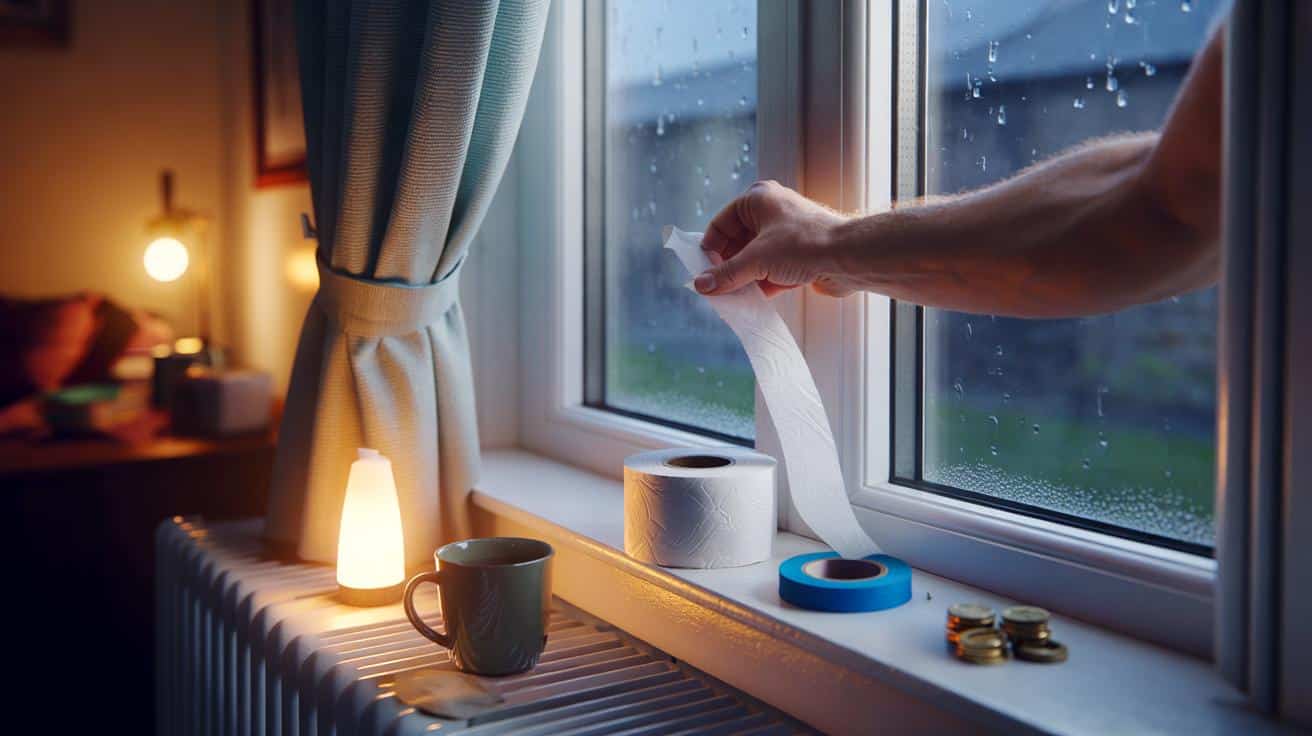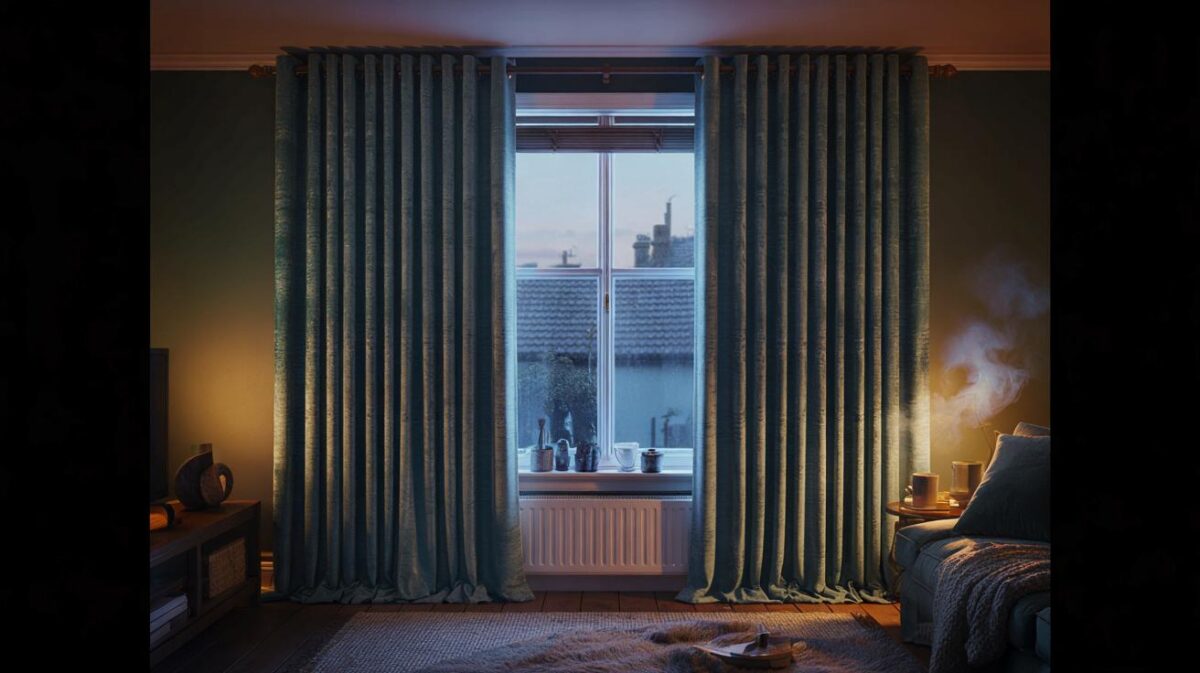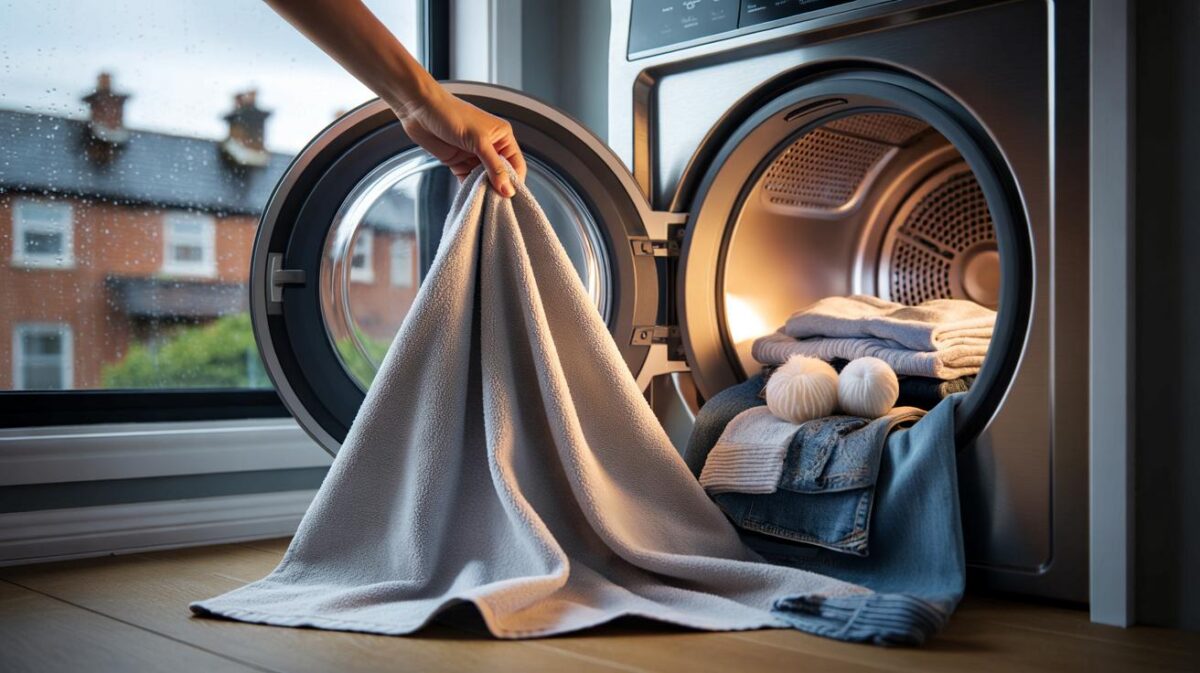A quiet, practical fix for cold rooms: how a £2 roll of kitchen paper can tame draughts, cosy up corners, and trim your heating bill without touching the boiler or the thermostat.
The radiator was on, the thermostat said 19, yet the curtains quivered as if someone had slipped in through the sash. I tore a sheet off a kitchen roll, held it to the frame, and watched it flutter like a flag. The gap was thin as a postcard, but the cold pouring through felt like a stream.
I twisted the paper into a soft rope, pressed it into the crack, and the room changed. The rattle dulled. The air settled. It wasn’t warmer by numbers, it was warmer by feel. *Warmth is a feeling, not a number on the thermostat.*
A neighbour texted me an hour later: “What on earth did you do?” I sent a photo of a scrappy white seal. A £2 roll did the rest.
Why a flimsy sheet beats fancy kit on a cold night
Heat rarely flees through walls first. It slips through hairline gaps, under doors, past letterboxes and loose beading. Those little currents of cold air – the **draughts** everyone swears they don’t have – churn a room and steal comfort faster than you’d think.
Stop the movement, and your radiator stops fighting a wind it can’t see. That’s the heart of this kitchen roll trick. It’s not pretty. It’s not forever. It simply slows the air swapping inside your home, buying you quieter, steadier warmth for pennies.
Think of it as putting a scarf on your house, not fitting it with a new coat. Quick to tuck in before bed. Quick to pull out before you open the window in the morning. No tools. No faff. And no regret when you bin it in spring.
Maya in Norwich tried it after texting me a photo of her toddler’s cot, pushed away from a sash window that whistled at 3am. She twisted two paper ropes and ran them along the meeting rail and parting bead. The whistle stopped.
On her smart meter, the evening usage dipped compared with the same weekday a week earlier. Not dramatic, but noticeable. She reckons the nights she seals the window she burns less gas, and her bill dropped by roughly **£15 a month** over December and January compared with last year, even with early bedtimes and the same set-point.
That’s anecdotal, sure, but it lines up with what energy advisers say: reduce infiltration, and you reduce how often your heating kicks in. Official estimates vary by home and weather. The pattern is the same – plug the leaks, feel the difference, watch the pennies.
Behind the cosy feeling is blunt physics. Warm air rises and slips out near ceilings; cold air sneaks in low and along edges. Tiny cracks and gaps act like little chimneys, driving a slow exchange that feels like a chill breeze where you sit.
When you twist and tuck kitchen roll into those cracks, you increase the resistance to airflow. The room isn’t sealed, it’s steadied. The radiator’s heat isn’t stripped away by micro-currents, so surfaces and people feel warmer at the same thermostat setting.
This is where a humble £2 roll wins against pricey gadgets: it targets the exact path of the draught without new kit or permanent changes. It’s reversible, forgiving, and you can re-do it in 60 seconds if a corner pops free.
The £2 kitchen roll hack, step by step
Grab a standard roll of kitchen paper. Walk the edges: window frames, door frames, skirting gaps, letterbox flap, the crease where a sash window closes, even the keyhole. Hold a loose sheet near each spot and watch for a flutter. If it moves, there’s a path for cold air.
Now twist two or three sheets into a rope the thickness of your little finger. Lightly dampen your fingers to smooth the rope, then press it into the gap, working along the line with your thumb. For bigger gaps, twist a second rope and layer it on top. At door thresholds, press a thicker sausage against the bottom edge as a temporary stopper at night.
If a spot keeps popping out, add a tiny tab of low-tack painter’s tape to anchor the rope to the frame. Avoid glossy radiators or heating pipes. Keep paper clear of open flames and heaters. In the morning, pull the rope out in one piece and bin it. A fresh rope works better than a soggy survivor.
Where this shines: rattly sash windows, draughty letterboxes, and the skinny shadow between a door and its frame. It’s also handy around trickle vents when the wind howls, though you should leave some airflow in lived-in rooms.
Don’t pack paper into vents feeding boilers or gas fires. Ventilation keeps you safe. If you’re in doubt, leave it out and ask a qualified engineer. And yes, this is a nightly ritual for some households. Let’s be honest: nobody does that every day. Do it when the weather bites or when the room feels unsettled.
People worry it looks scruffy. It does. Then again, so do woolly socks, and nobody’s judging those in January.
“Stopping air movement is the cheapest heat you’ll ever buy,” says Jess Cooper, an energy adviser at a community hub in Bristol. “Paper, tape, a steady hand – it’s low-tech comfort.”
- Best spots: sash meeting rails, letterboxes, keyholes, door frames, skirting cracks.
- Time needed: 2–5 minutes per window or door.
- What not to block: vents for boilers or open-flued appliances; keep carbon monoxide alarms active.
- Lifespan: one cold night; replace rather than reuse.
- Cost: about a **£2 kitchen roll hack**, plus optional painter’s tape.
Why this scrappy trick works in a smart-home world
We’ve all had that moment when the room says “nope” and chills you, even with the heating humming. This hack doesn’t fight the thermostat. It helps it. By calming the air, you feel more heat from the same radiator because the heat isn’t whisked away by invisible currents.
That’s why it belongs alongside proper fixes: draught excluders at doors, brushes on letterboxes, foam strips on frames, thick curtains at dusk. The paper is your scout and your quick win. Use it to map the leaks, live better tonight, then decide what’s worth upgrading at the weekend.
Some homes will see dramatic gains, others only a little. That’s fine. The value here is control. You’re not waiting on a tech update or a landlord’s schedule. You’ve got a roll, ten minutes, and a colder corner. You can change that now.
There’s also a mindset shift tucked in these white ropes. Instead of cranking heat and hoping, you’re managing how warmth behaves in your space. That’s empowering on a grey Tuesday when the rain slants in and the bills sit heavy on the hallway table.
The ripple effects are small but real: fewer cold spots; curtains that stop billowing; a child who sleeps through; a living room that holds onto its evening glow while you make a cuppa. You might talk to your neighbour about it, laugh at how daft it looks, then trade tips on where the worst leaks lurk.
Maybe you’ll keep paper by the window till spring. Maybe you’ll graduate to tidy foam strips or a draught brush kit. Either way, the lesson sticks: warmth is movement as much as temperature, and you can guide it with something you already own.
| Point clé | Détail | Intérêt pour le lecteur |
|---|---|---|
| Target draughts first | Use a flutter test with a sheet to find gaps before twisting ropes | Fix what matters most in minutes, not hours |
| Temporary, repeatable fix | Tuck kitchen roll into frames at night; remove in the morning | Immediate comfort without damage or tools |
| Safety and common sense | Keep away from heaters; don’t block combustion vents | Stay warm and safe while trimming bills |
FAQ :
- Will this actually lower my bill?It can. Slowing air leaks means your heating cycles less to maintain the same set-point. Some readers report savings around £10–£20 in colder months, though every home is different.
- Is it safe near radiators?Keep paper away from hot surfaces and open flames. Don’t tuck it behind radiators or near heaters. Use low-tack tape if you need an anchor on frames, not on radiators.
- Can I block trickle vents?Only partially and only for short stints. Rooms need fresh air. Never block vents serving boilers or gas fires. Keep your carbon monoxide alarm working and audible.
- What about condensation and mould?If the room gets stuffy or windows mist heavily, remove the paper and air the space daily. Balance comfort with ventilation. Thick curtains at night help without sealing the room.
- Is there a neater long-term fix?Yes: self-adhesive foam strip for frames, brush seals for letterboxes and doors, keyhole covers, and proper sash window draught-proofing. Use the paper trick to test spots before you buy.









